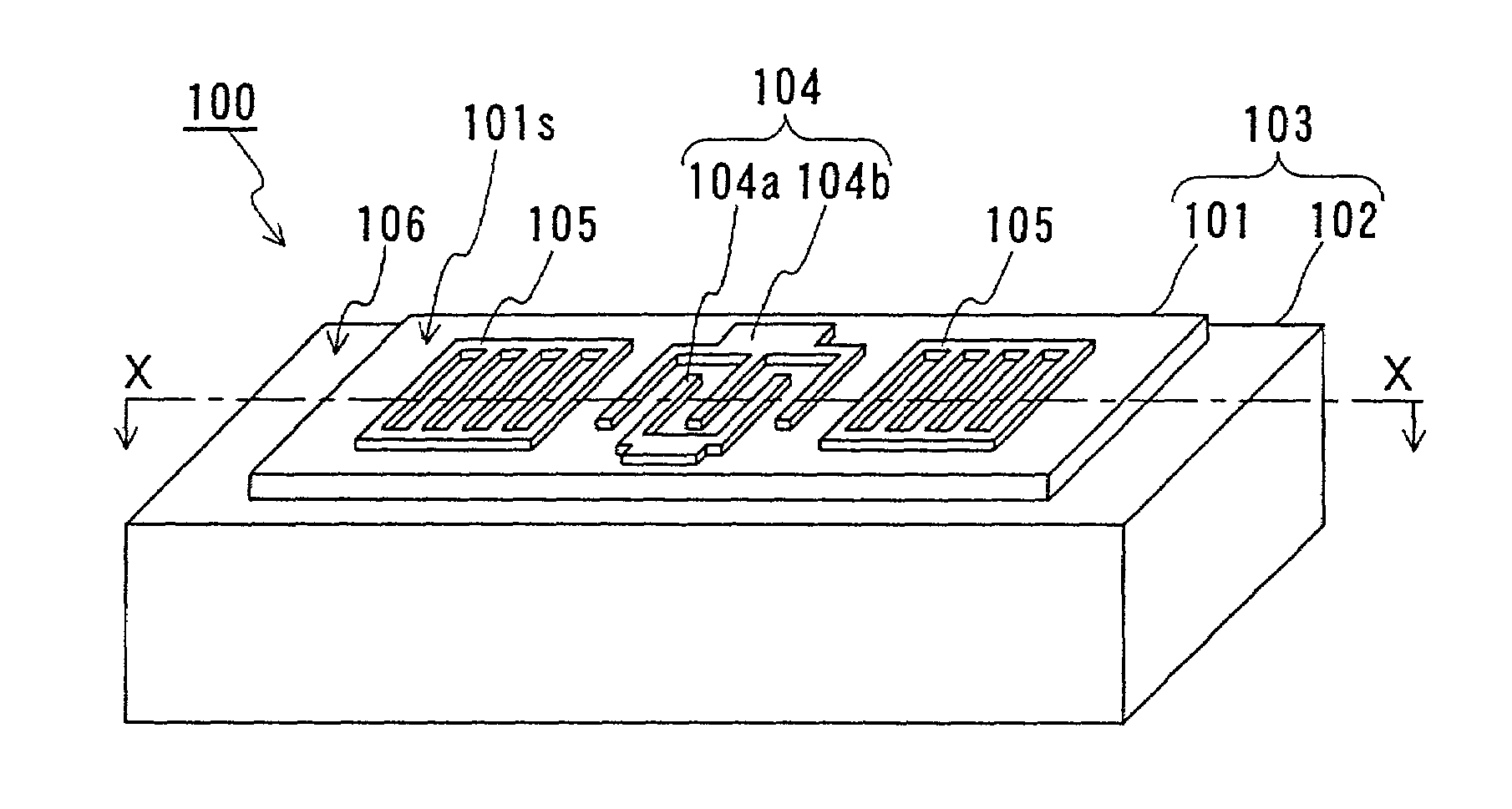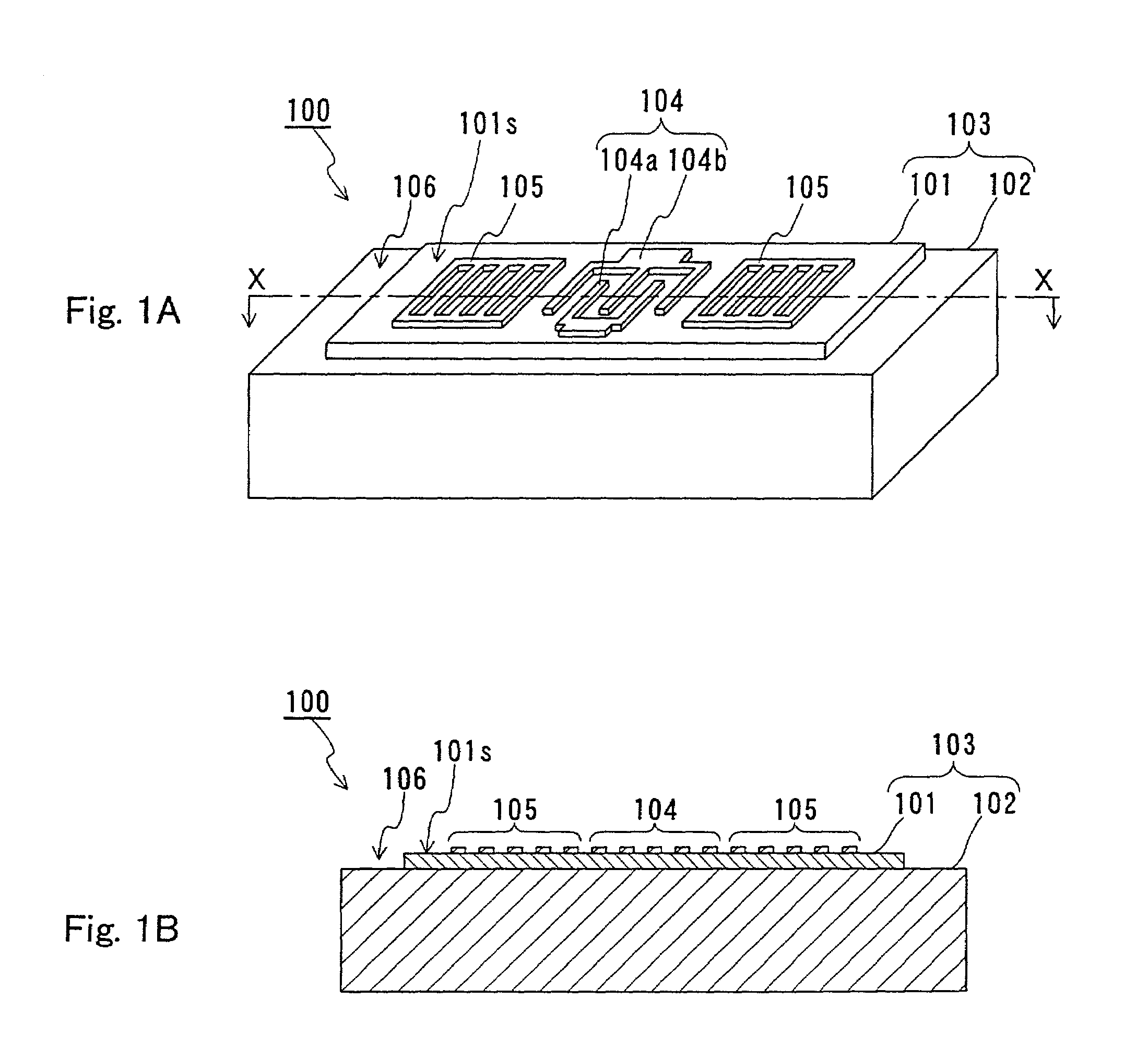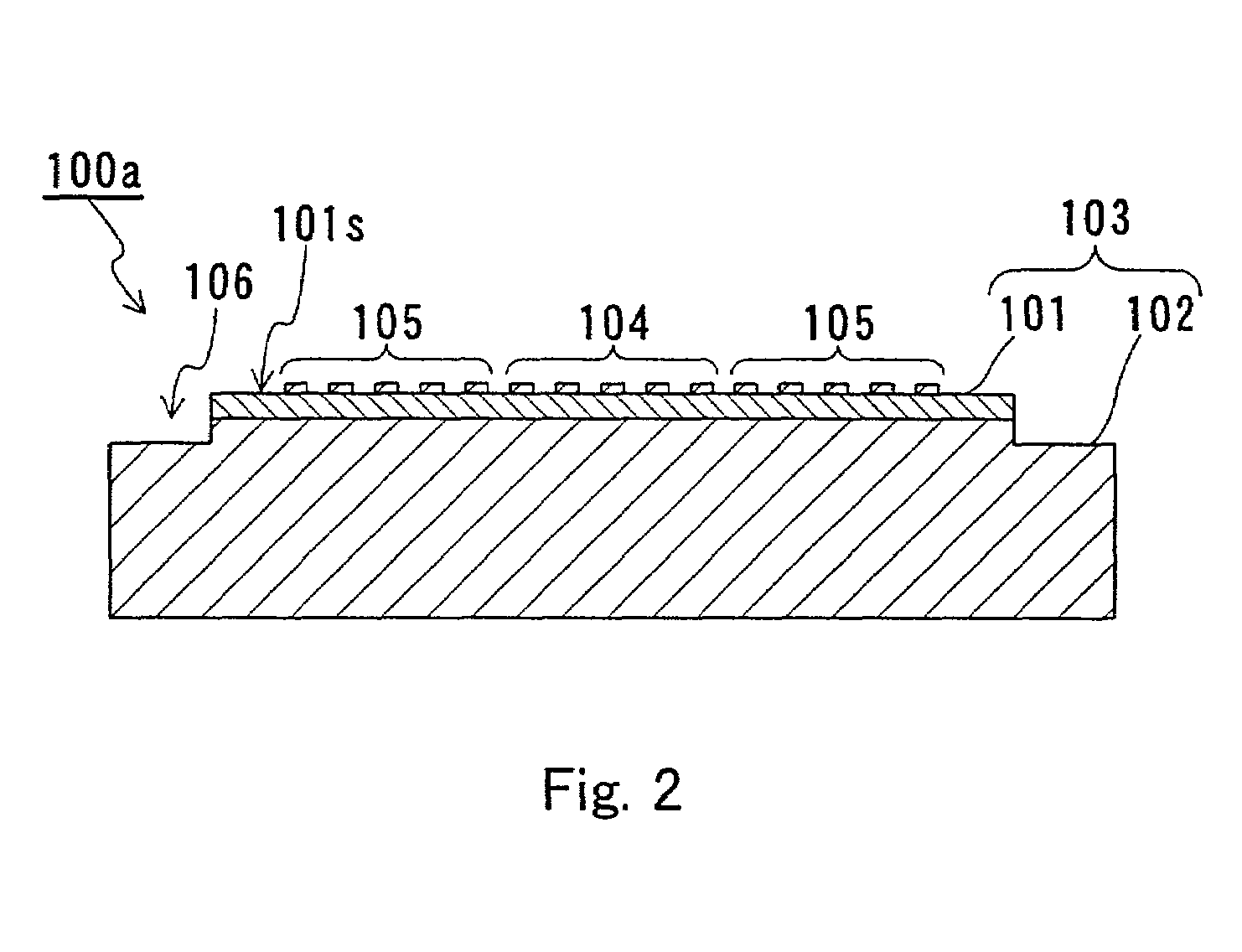Method for producing a surface acoustic wave element
a surface acoustic wave and element technology, applied in piezoelectric/electrostrictive transducers, device material selection, transducer types, etc., can solve the problems of difficult to achieve a sharp cut-off property in the temperature range used, conventional difficult to handle surface acoustic wave elements, etc., to achieve reliable and inexpensive production, easy to handle, and low cost
- Summary
- Abstract
- Description
- Claims
- Application Information
AI Technical Summary
Benefits of technology
Problems solved by technology
Method used
Image
Examples
embodiment 1
[0042]In Embodiment 1, an example of a surface acoustic wave element of the present invention will be described.
[0043]FIG. 1A is a perspective view of a surface acoustic wave element 100 of Embodiment 1, and FIG. 1B is a cross-sectional view thereof taken along line X—X in FIG. 1A.
[0044]Referring to FIGS. 1A and 1B, the surface acoustic wave element 100 includes a laminated substrate 103 comprising a first substrate 101 and a second substrate 102, a comb-shaped electrode 104, and a reflector 105. A step 106 is formed on the periphery (side face) of the laminated substrate 103 on the side of the first substrate 101.
[0045]The first substrate 101 is made of a piezoelectric material, and for example, a piezoelectric single crystal can be used. Examples of the piezoelectric single crystal include lithium tantalate, lithium niobate, quartz crystal, and Langasite. More specifically, a 36° Y-cut X-propagating lithium tantalate can be used, for example. The thickness of the first substrate 1...
embodiment 2
[0054]In Embodiment 2, another example of the surface acoustic wave element of the present invention will be described. The description of the same parts as those described in Embodiment 1 will be omitted.
[0055]FIG. 6A is a perspective view of a surface acoustic wave element 200 of Embodiment 2, and FIG. 6B is a cross-sectional view thereof taken along line Y—Y in FIG. 6A.
[0056]Referring to FIGS. 6A and 6B, the surface acoustic wave element 200 includes a laminated substrate 103 comprising a first substrate 101 and a second substrate 102, a comb-shaped electrode 104 formed on a surface 101s of the first substrate 101, and a reflector 105. A notch 201 is formed on the periphery of the laminated substrate 103 on the side of the first substrate 101.
[0057]The notch 201 is formed on the side face of the laminated substrate 103 where the comb-shaped electrode 104 is formed. In other words, the notch 201 is formed on the periphery of the laminated substrate 103 on the side of the first sub...
embodiment 3
[0062]In Embodiment 3, an example of a method for producing the surface acoustic wave element 100 described in Embodiment 1 will be described. The description of the same parts as those described in Embodiment 1 will be omitted.
[0063]Referring to FIGS. 9A to 9E, in the method of Embodiment 3, first, as shown in FIG. 9A, a first substrate 101a (having a thickness of, for example 0.2 mm), which will be the first substrate 101, is laminated directly on joined to) a second substrate 102a (having a thickness of, for example 1 mm), which will be the second substrate 102. In this embodiment, the first substrate 101a having a thickness of 0.2 mm and the second substrate 102a having a thickness of 1 mm are used as the starting materials and joined together. However, this is only an example, and the materials can be selected in view of handling in a substrate cleaning process, ensuring parallelism and smoothness of each substrate, or the like. There are no particular limitations regarding the...
PUM
| Property | Measurement | Unit |
|---|---|---|
| thick | aaaaa | aaaaa |
| thick | aaaaa | aaaaa |
| thickness | aaaaa | aaaaa |
Abstract
Description
Claims
Application Information
 Login to View More
Login to View More - R&D
- Intellectual Property
- Life Sciences
- Materials
- Tech Scout
- Unparalleled Data Quality
- Higher Quality Content
- 60% Fewer Hallucinations
Browse by: Latest US Patents, China's latest patents, Technical Efficacy Thesaurus, Application Domain, Technology Topic, Popular Technical Reports.
© 2025 PatSnap. All rights reserved.Legal|Privacy policy|Modern Slavery Act Transparency Statement|Sitemap|About US| Contact US: help@patsnap.com



